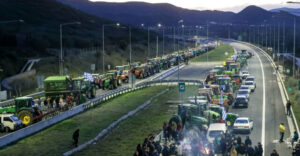Between Chania and Heraklion lies Rethymno, home to beautiful beaches, archaeological sites, and elegant Venetian architecture. The Old Town is a picturesque delight full of narrow alleyways, handsome mansions, renaissance doorways, and a charming port spearheaded by a 19th century lighthouse.
Brooding behind lies the vast edifice of the Fortezza, a medieval castle that stands on a hill above the town. The larger region of the Rethymno prefecture is the most mountainous in Crete, bordered to the west by the White Mountains (Lefka Ori) and to the east by Mt. Psiloritis.
The northern coast is fronted by a long coastal strip of sandy beaches, home to low-key seaside resorts, while the south offers more secluded coves, traditional villages, orchard-filled plateaus, and daunting gorges that run down to the Libyan Sea. The third largest city in Crete, Rethymno delights with history at every turn.
Elegant Venetian homes neighbour later Ottoman residences with lattice-fronted balconies, stone doorways lead to enticing courtyards and minarets soar into the blue Cretan skies. However the city is very much a part of the present; the honeycomb of cobbled streets dappled with shade from bougainvillea and jasmine harbour cutting edge restaurants, trendy bars, contemporary art, an acclaimed university, and boutique accommodation.
Most visitors are content to wander the pretty streets and to spend time on the endless beaches of the northern shore, but more adventurous travelers will appreciate the interior. Wild and remote, it is a land of shepherds and farmers, of fragrant orchards, wildflower-filled plateaus, harsh rockfaces, and deep gorges running down to the sea, while the southern coast is a rugged landscape of coves and small sandy bays.
Ask me anything
Explore related questions





